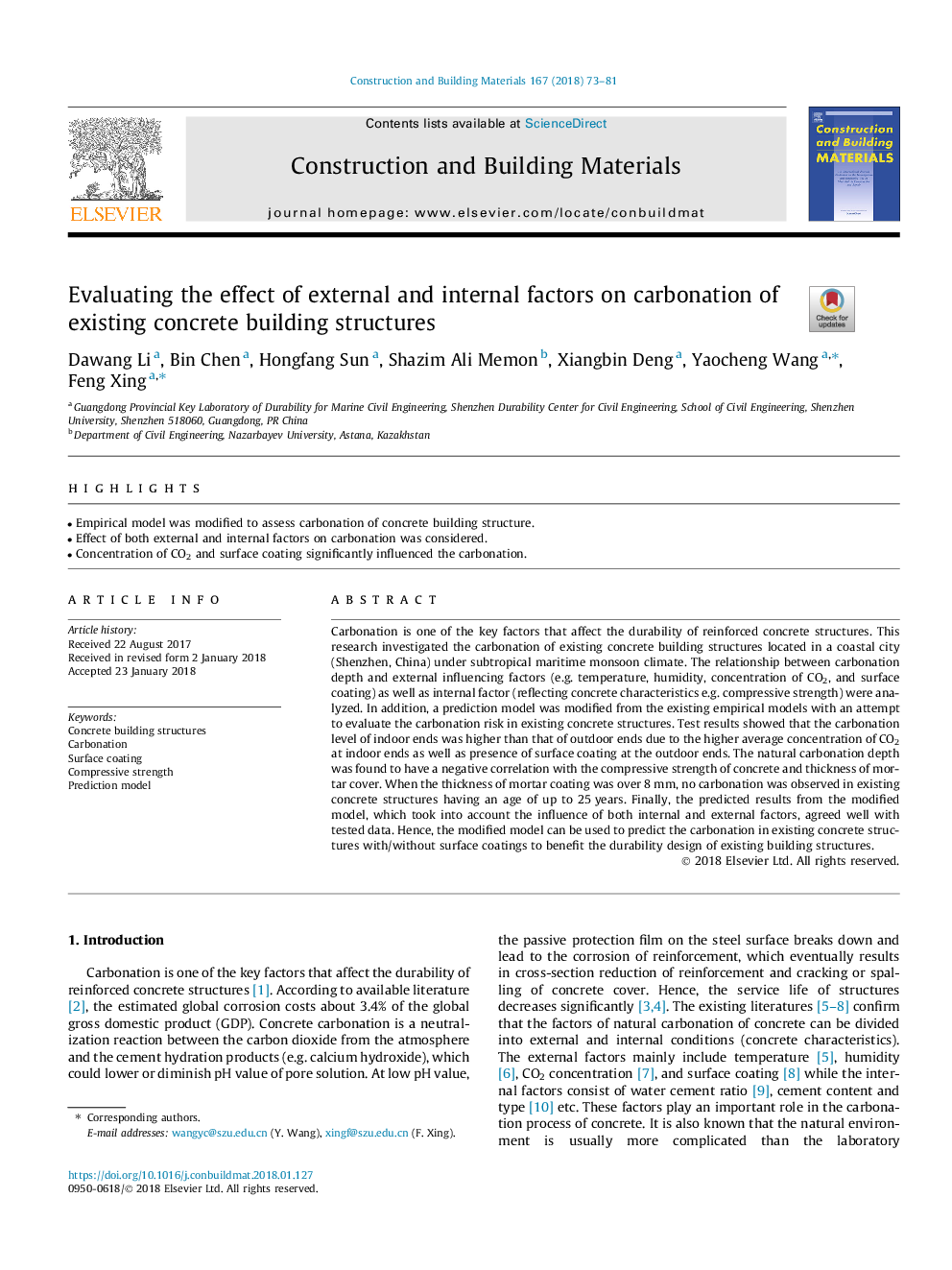| Article ID | Journal | Published Year | Pages | File Type |
|---|---|---|---|---|
| 6714894 | Construction and Building Materials | 2018 | 9 Pages |
Abstract
Carbonation is one of the key factors that affect the durability of reinforced concrete structures. This research investigated the carbonation of existing concrete building structures located in a coastal city (Shenzhen, China) under subtropical maritime monsoon climate. The relationship between carbonation depth and external influencing factors (e.g. temperature, humidity, concentration of CO2, and surface coating) as well as internal factor (reflecting concrete characteristics e.g. compressive strength) were analyzed. In addition, a prediction model was modified from the existing empirical models with an attempt to evaluate the carbonation risk in existing concrete structures. Test results showed that the carbonation level of indoor ends was higher than that of outdoor ends due to the higher average concentration of CO2 at indoor ends as well as presence of surface coating at the outdoor ends. The natural carbonation depth was found to have a negative correlation with the compressive strength of concrete and thickness of mortar cover. When the thickness of mortar coating was over 8â¯mm, no carbonation was observed in existing concrete structures having an age of up to 25â¯years. Finally, the predicted results from the modified model, which took into account the influence of both internal and external factors, agreed well with tested data. Hence, the modified model can be used to predict the carbonation in existing concrete structures with/without surface coatings to benefit the durability design of existing building structures.
Related Topics
Physical Sciences and Engineering
Engineering
Civil and Structural Engineering
Authors
Dawang Li, Bin Chen, Hongfang Sun, Shazim Ali Memon, Xiangbin Deng, Yaocheng Wang, Feng Xing,
